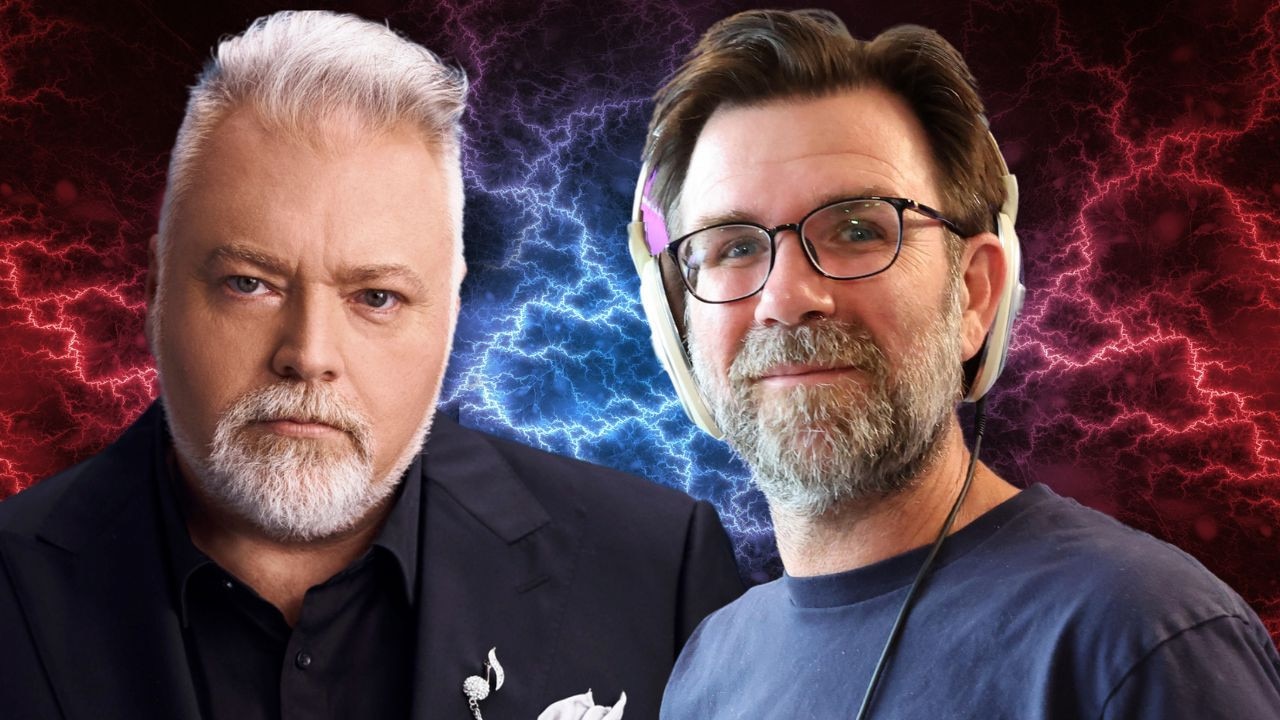I took an Arctic cruise and got the 6am wake-up call of my dreams
When cruising in the Arctic a polar bear sighting is a gift, not a guarantee. On this cruise, we experience the excitement three times.
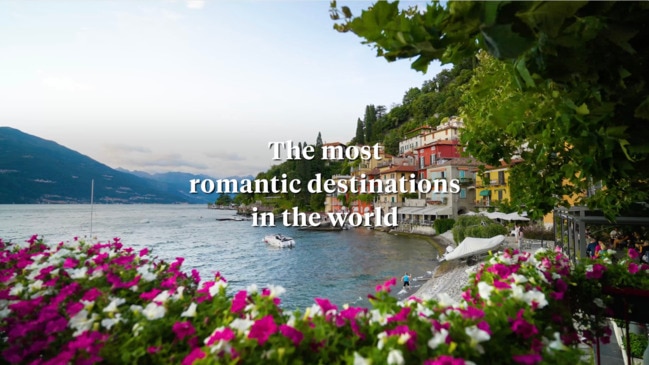
Lifestyle
Don't miss out on the headlines from Lifestyle. Followed categories will be added to My News.
The bubble bursts early. Standing in front of 77 eager amateur Arctic explorers, naturalist John Kernan is introducing the king of the tundra, lord of the ice – the polar bear. The slideshow on the lecture theatre wall behind him shows two images: one a close-up; the other a blur of fur on a cliff face. “That’s what you’ll see,” he says, pointing to the second image.
There is no certainty, of course, that we will cross the path of a polar bear at all on this 14-day voyage under the Midnight Sun. But we have boarded Aurora Expeditions’ ship Greg Mortimer in hope, and John is only preparing us for the reality of wildlife viewing in the Arctic Circle. Nature rules here. We’re guests – ones who must observe from a government-mandated distance without disturbing the bears, whales, walrus and seabirds we’ve flown across the world to see.
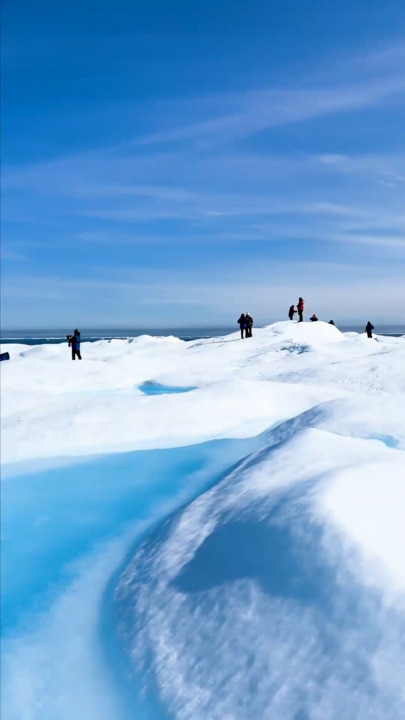
Our “Jewels of the Arctic” itinerary starts in the world’s northernmost town, Longyearbyen, in Svalbard, the archipelago administered by Norway but a three-hour flight north from its capital, Oslo. We are set to sail north pole-wards into Northwest Spitzbergen National Park, then turn west through ocean and sea ice to the world’s largest fjord system in eastern Greenland. Expedition cruising plans are always at the mercy of the conditions, but along the way is the promise of tundra hikes, bear spotting on sea ice, kayaking excursions under Atlantic puffin-nest-filled cliffs, Zodiac rides to glaciers and seabird surveys.
We do get a close-up with a polar bear before leaving Longyearbyen, a 500kg specimen in the Svalbard Museum that got too close for comfort to a man with a gun 20 years ago. This excellent museum has a newly revamped permanent exhibition covering the archipelago’s history of polar exploration, hunting, whaling and the coal mining that brought the town into existence in the early 20th century. Among the oldest exhibits is a felt hat the museum says could have belonged to Willem Barentsz, the Dutch explorer who perished in 1597 on his third attempt to find a northeast passage to China, not long after discovering Svalbard and naming it Spitzbergen for its jagged peaks.
This old-world mariner could never have dreamed of a vessel such as the Greg Mortimer, launched by Australian-based Aurora Expeditions in 2019 and named for the company’s co-founder, the first Australian to climb Mount Everest. The ship, purpose-built for the world’s most remote and roughest oceans, is notable for its groundbreaking, eagle’s beak-shaped bow –registered name the Ulstein X-Bow – which reduces the impact of swell, increases stability and makes for a smoother on-board experience. (It doesn’t, however, eliminate seasickness, as I will find out in the Greenland Sea after failing to take pharmaceutical precautions.)
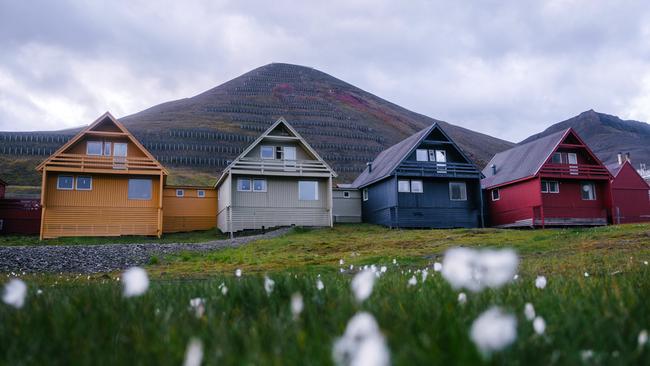
Aurora Expeditions earned B Corp sustainability certification in early 2024, and the ship has technology aplenty to reduce its environmental “seaprint” as much as possible. We see it in relatively small ways on board such as the refill stations for the aluminium water bottles we’re given when we first board and the fact that paper copies of the daily bulletin, the Puffin Post, are no longer distributed to cabins – we can read it at various points throughout the ship.
There’s a spacious dining room with windows on three sides, lecture theatre, gym (and on-board massage therapist), and a library filled with volumes on polar history, geology and wildlife. A 17-strong, multi-skilled international expedition crew is led by charming Italian Mario Placidi Spring, who’s worked in the Arctic for a decade, and includes firearms and polar bear safety manager Jeff Nagel. Jeff explains that Norwegian law requires firearms to be carried in Svalbard in the unlikely event that protection from bears is needed. “We’re trained to kill but this is a last resort.”
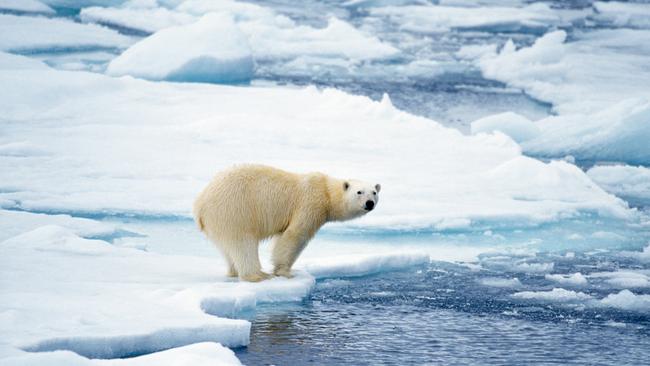
Best kind of alarm
Mario’s voice booms into our cabins at 6am after our first night aboard. It’s the best kind of alarm. The chief officer has spotted a bear on a gravelly spit of land in the distance. There’s a rush to the observation deck at the front of the ship; we’re almost a kilometre away but, passing around binoculars, we see the bear with its bloodied head buried Hannibal Lecter-style in a walrus carcass.
It’s the first of three bear encounters on the expedition, each one “a gift”, according to Mario. Two days later, a bear appears on the approach to Brochøya and Foynøya islands, high in the Svalbard Archipelago, turning a planned landing into a Zodiac excursion in case the bear was still around. But the spot of the expedition comes later. A fellow passenger, sitting on her bed tying her shoelaces, looked up to see two bears – likely a mother and cub – on a drifting ice floe. The word spreads quickly, but I only catch a glimpse as they disappear behind us; environmental laws prevent the ship from backtracking or stopping to look for bears within 12 nautical miles of the Greenland coast.
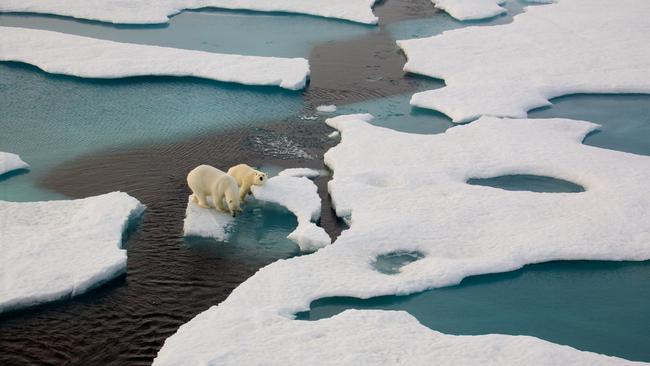
Our voyage takes us far north to 80 degrees, where there is nothing but pack ice between us and the North Pole about 870km away. It feels like the edge of the world. We spend an afternoon cruising a glassy ocean in Zodiacs, watching groups of walruses lolling on ice, tucked tight together like a pack of big brown sausages. With their metre-long tusks, it’s no wonder Filipino staff on the Greg Mortimer call them vampire seals.
The conditions are perfect, but this is where polar dreams crashed – literally. Renowned Norwegian polar explorer Roald Amundsen was lost in a plane crash here in 1928, on a search mission for survivors of the airship Italia, which itself had met an end in pack ice after reaching the North Pole.
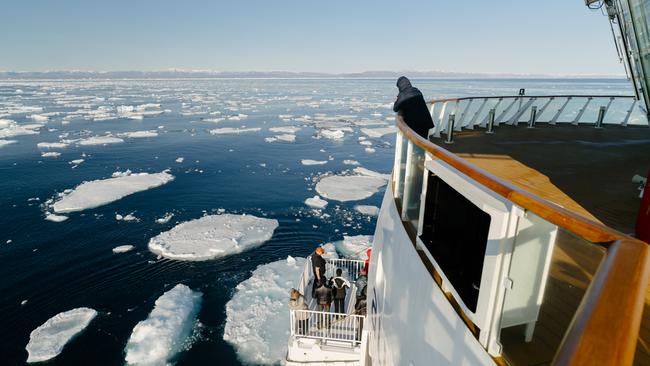
Going west
Ittoqqortoormiit, our destination in East Greenland, is an Inuit village, population 300 and celebrating its 100th year in 2025. With no road access and iced-in nine months of the year, it’s at the mouth of the world’s largest fjord system, Scoresby Sund, and the world’s largest national park, Northeast Greenland National Park, is to the north.
There’s plenty of time to wrap tongues around the remote town’s name (It-ockor-tormit, meaning “place with the big houses”) because it takes four days to get there from Svalbard, our zig-zag passage across the Greenland Sea slowed by dense fog and thick bands of sea ice. Time is passed with lectures, games, cups of tea and freshly baked biscuits, and half a day confined to quarters seasick.
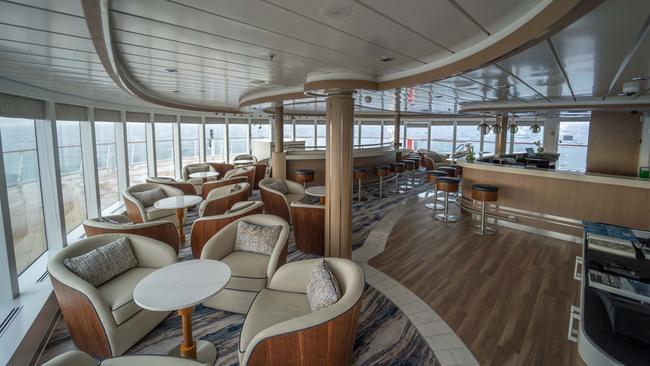
This is a special-occasion cruise for several passengers, including me. I spend hours on my birthday watching sea ice and losing at Scrabble in the library before being serenaded at dinner by the waiters, who are eternally cheerful to a man and woman and always ready to serve up a side of song.
One afternoon, when the mist clears, we’re loaded into Zodiacs to take turns landing on a solid ice floe. It’s a surreal experience, tramping in our muck boots on this icy island, criss-crossed with channels and pools of turquoise meltwater and dotted with hummocks. This half-hour of magic sums up what expedition cruising can deliver.
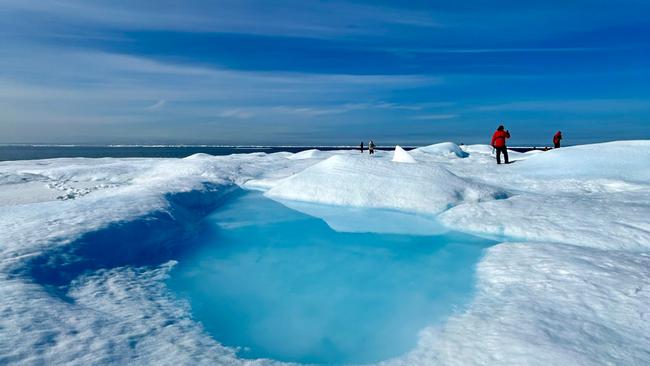
But then there’s more. We wake and pull up our blockout blinds to a clear morning and a view of Ittoqqortoormiit, its coloured houses, typical of Greenland, climbing a hill we later find is topped with the simple white crosses of a cemetery, and also an emerald-green soccer field. The Greg Mortimer is the first non-icebreaker ship to find a route through the ice to East Greenland this season.
The town has a weather station, a small tourist office and museum and a shop that receives supplies only twice a year. Mario’s Ittoqqortoormiit contact is grateful to receive a bag of coffee beans, but Aurora Expeditions is contributing in a bigger way, helping to fund the museum’s refurbishment, a project commemorating the town’s founding.
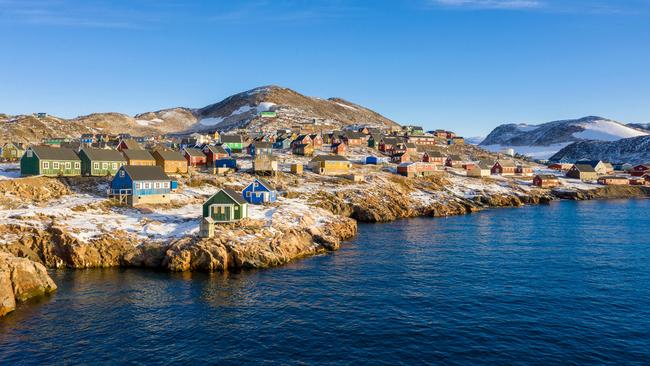
It’s such a warm day – all of 10C – we discard outer jackets to walk around the village, visiting its small red church and being caught dead in our tracks by the sight of local children jumping around in an outdoor pool that looks like it’s made from shipping containers. We skirt the shoreline by Zodiac and kayak, taking in the rugged peaks surrounding us, the Greenland dogs tethered in the perma-snow and a polar bear hide drying in the sun.
Our expedition is nearing its end, but there’s time left to sail a little further into a branch of Scoresby Sund, where 25 people braver than me line up on a pontoon at Greg Mortimer’s stern to take the polar plunge traditional on cruises in this part of the world. Watching from above, I felt a momentary flash of envy. Maybe next time. After dinner on our final night, as we close in on Reykjavik and think we’ve seen all the wildlife we’ll see, the call goes out. Orcas, five of them, are close, surfing in and out of the ship’s wake. What a farewell.
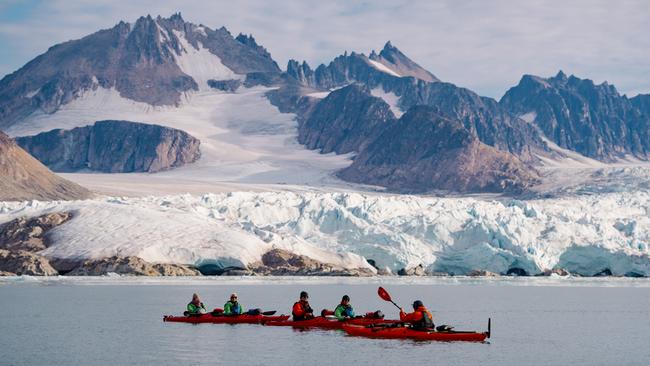
5 things you need to know before cruising the Arctic
1. Our 77 expeditioner ranged from their 30s to their 80s, coming mostly from Australia, the UK, the US and Mexico. Fitness levels varied, with the less active able to sightsee by Zodiac and take part in beach walks and citizen science rather than do more vigorous, longer hikes.
2. A moderate level of fitness and some experience is needed for the sea-kayaking program, which is an additional $1250. I, and several others in the kayaking group, did a basic refresher course with a local operator at home before signing on. Our group of 17 was accompanied by three guides. Dry suits are supplied.
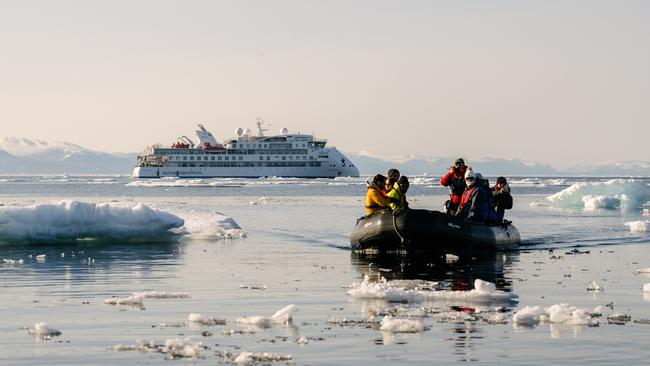
3. What to pack: Your kit should include waterproof pants and gloves (the kind you can still use touchscreens while wearing), a hat that covers your ears, thermals including socks. Guests are given a waterproof polar expedition jacket and puffer lining to keep and muck boots are provided for use during the cruise. The ship has some binoculars but it’s a good idea to bring your own if you have them.
4. The expedition crew keeps record of day-to-day conditions and wildlife sightings, and passengers are emailed a voyage log with photos after their trip.
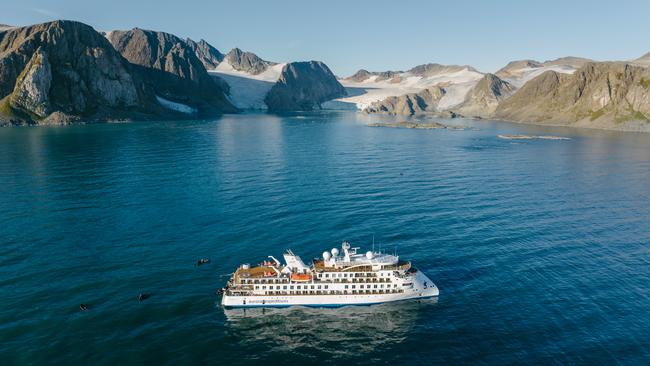
5. The Midnight Sun shines in Svalbard from April to almost the end of August, so you will not see the Northern Lights during this time.
How much does the 15-day Jewels of the Arctic cruise cost?
The 15-day Jewels of the Arctic itinerary, departing from Oslo, Norway, and finishing in Reyjavik, Iceland, is priced from $24,671 a person twin share based on a June 27, 2026, departure (price is inclusive of “Save up to 25 per cent off” offer). Includes a night in Oslo and charter flight to Svalbard, meals and alcohol with lunch and dinner.
The writer was a guest of Aurora Expeditions.
More Coverage
Originally published as I took an Arctic cruise and got the 6am wake-up call of my dreams




